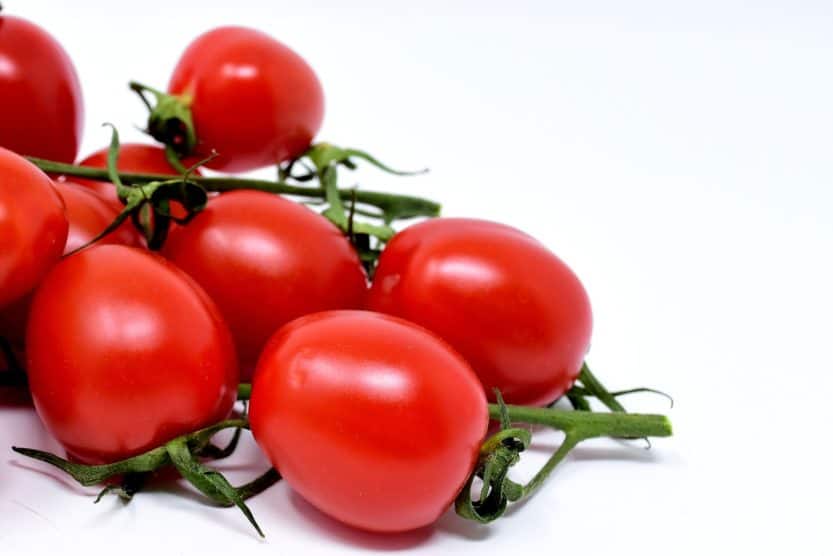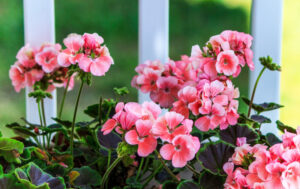Tomatoes are one of the most popular plants in the home gardens and for good reason. Tomatoes can be added to almost any meal, from breakfast in an omelet to lunch diced into a salad, or pureed in marinara sauce for dinner. Tomatoes are also an excellent source of vitamin C, biotin and vitamin K, while also being a very good source of vitamin A, manganese and potassium.
Buy Tomato Seeds Online
| Image | Name | Rating | Shop |
|---|---|---|---|
 | Organic Heirloom Cherry Tomato Garden Seeds – 6 Non-GMO Varieties |
Types of Tomatoes to Grow
The two primary types of tomato are determinate and indeterminate. Determinate tomatoes produce all of their tomatoes in one short burst, then die back; while indeterminate varieties have long vines that produce fruit throughout the season.
You can find a wide range of shapes and colors from cherry tomatoes to beefsteak and then from yellow tomatoes to purple tomatoes, in both indeterminate and determinate varieties. Cherry tomatoes produce an abundance of quick-ripening, small tomatoes, while large, beefsteak varieties produce fewer large, slow-ripening fruit.
Tomato Flavors
When it comes to colors, yellow or green tomatoes have a mild sweet flavor, while dark purple tomatoes have a very rich flavor. In the end, you should pick a type that suits your tastes, while also having the growth characteristics to do well in your climate.
Tomato Growing Temperature
Tomatoes are native to the tropical climate of Central America, so they need a warm climate to thrive. Tomato seeds need to germinate at a soil temperature of at least 55 degrees Fahrenheit (12.8 C).
Starting Tomato Seeds Indoors
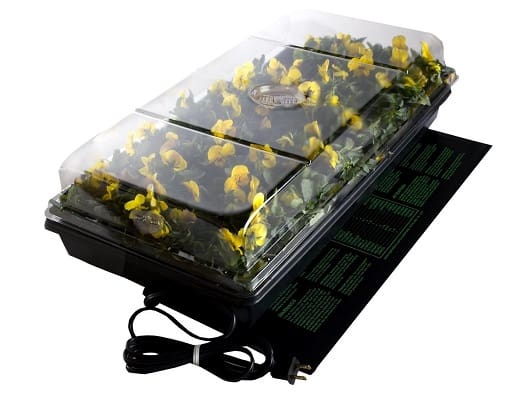
In cooler climates, it’s a good idea to start tomato seeds indoors in a heated seed tray (Buy Online), about 4 weeks before the last frost in your area. Tomato seeds will germinate faster if you keep the moistened seeds at a temperature of 80 degrees Fahrenheit (26.7 C). Allow the tomato seedlings to grow to at least 4 inches (10 cm) tall. Then, once all danger of frost has passed, set the plants in the sun every day to harden them off, before placing them in the garden.
Planting Tomatoes in the Garden
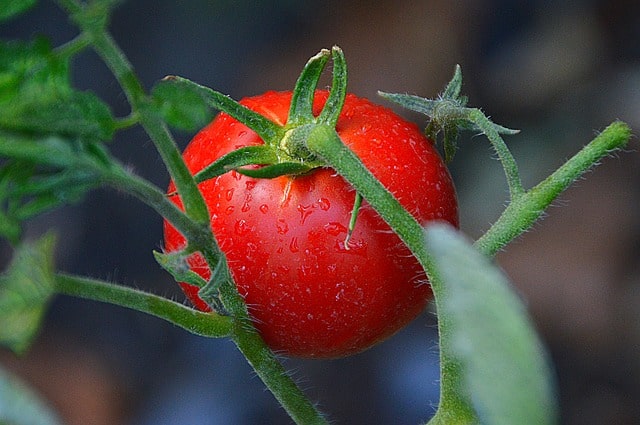
When selecting a planting site for tomatoes, be absolutely sure the location has full sun throughout the day. If you can find a spot that retains more heat than other areas in your garden, then this would be an optimal place to grow your tomatoes.
Tomato Plant Soil pH
The soil should have adequate drainage, with good fertility, and have a pH of 6.0 to 6.8. If your soil needs some improvement, add compost and any other amendments about two weeks before planting.
Growing Tomatoes in Raised Beds
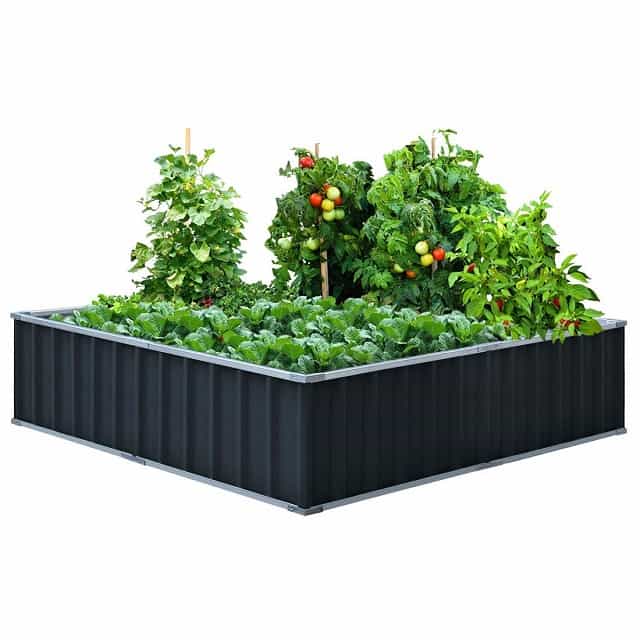
If your soil tends to stay cool well into the spring, you have two options, either grow your tomatoes in a raised bed (Buy Online) or use black plastic mulch. A raised bed will have a slightly elevated soil temperature and black mulch will heat up your native soil by transferring more of the sun’s energy into the ground.
Tomato Planting Depth and Spacing
If you are planting seeds, put them into the soil at a depth of 0.25 inches (0.64 cm) and space them 10 inches (30 cm) apart, thinning them once they germinate. If, on the other hand, you have seedlings to transplant, then you should place them at their final spacing of 20 inches (60 cm) apart.
Tomato Water Requirements
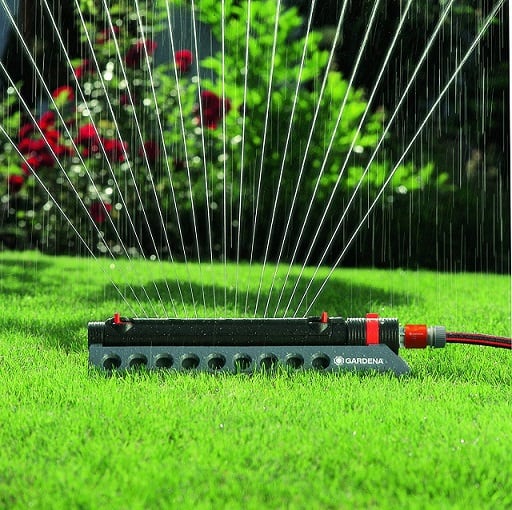
Water your seeds and/or seedlings every day for a week, until the seeds germinate or the plants begin to perk up. Once the plants are established, they will require 1 inch (2.5 cm) of water a week.
As the season progresses, you will notice that your tomato plants do not suffer from high temperatures, like other plants in the garden might. This might lead you to water them less because they look healthy; however, you should resist this urge, as the fruits will need sufficient moisture to ripen, so be sure to keep the plants well hydrated.
Tomato Weed Control
While your seedlings are small, make sure you remove any weeds that might sap the young plants of their nutrients, but if you used a black plastic mulch, this should not be a problem. Otherwise, hand pull any weeds closer to the plant, while working the soil with a hoe once you are a safe distance from the root system.
Tomato Plant Care Tips
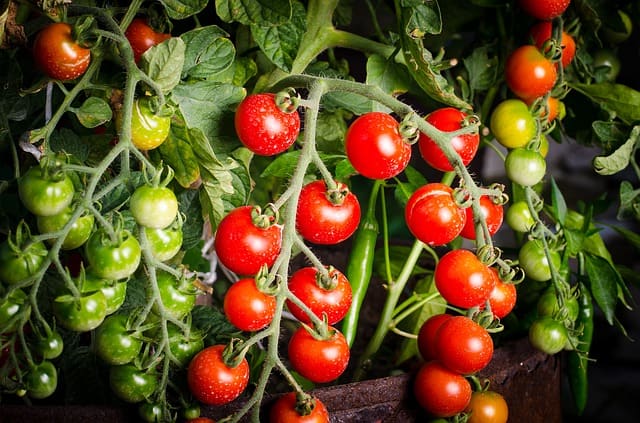
Tomato Plant Fertilizer Schedule
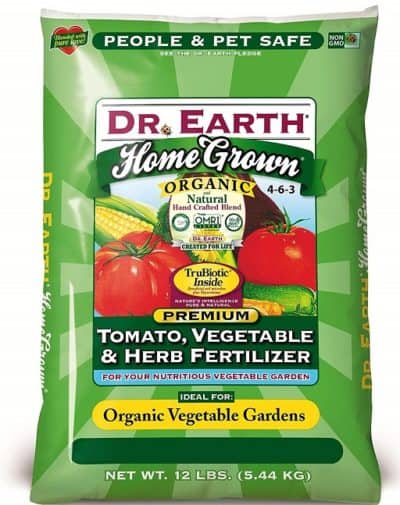
Once the tomato plants have been growing for two weeks, apply a tomato fertilizer (Buy Online). After that you should continue to fertilize the plant every two weeks. Make sure your soil has adequate calcium levels once the start to set fruit or the tomatoes will suffer from blossom end rot, which will make the fruits unusable.
Install a Tomato Cage
When the plant reaches a height of about a 1 foot (30.5 cm), you should consider supporting it with a tomato cage. Adding a cage now will prepare the plants for the heavy load of fruits that will pull down on its branches later in the season. If you are growing a smaller, determinate variety, this added support may not be necessary.
Tomato Pests and Diseases
While the tomato plants begin to mature, some diseases and pests can affect them, such as flea beetles and verticillium wilt. Flea beetles tend to chew small holes in the leaves; but for the most part, a strong healthy plant will survive the damage, which is mostly cosmetic.
Verticillium wilt, on the other hand, can devastate your plants. The best preventative measure against verticillium wilt is to avoid planting tomatoes where peppers or other nightshades have been planted during the prior season.
When are Tomatoes Ripe?
Tomatoes usually start to ripen once the plant has been growing for two months. Keep checking the tomatoes for color changes, which will indicate ripening. A fruit that is in its optimal picking window will have a deep, rich coloration.
Harvesting Tomatoes
When picking the first round of tomatoes, try to harvest them before they completely ripen, in order to encourage more tomatoes to grow on the plant. Once you have found that perfect tomato, it should slip quite easily from the plant. Since tomatoes do not tend to cling to the plant when ripe, it’s a good idea not to forcefully rip them off the stem.
Indeterminate tomato plants will continue to produce up to the first frost in your area. While determinate varieties, on the other hand, can be removed once their harvest is over to make room for any other plant that you may want to add to the garden.
Storing Tomatoes After Picking
Tomatoes should be stored at room temperature on a kitchen counter or cabinet and can be stored this way, keeping for weeks, as long as they have no bruises or damage.
Never store your tomatoes in the refrigerator, or they will become bland and mealy. For long-term storage, you can jar homemade sauces and then store them on the shelf for a year or more.


